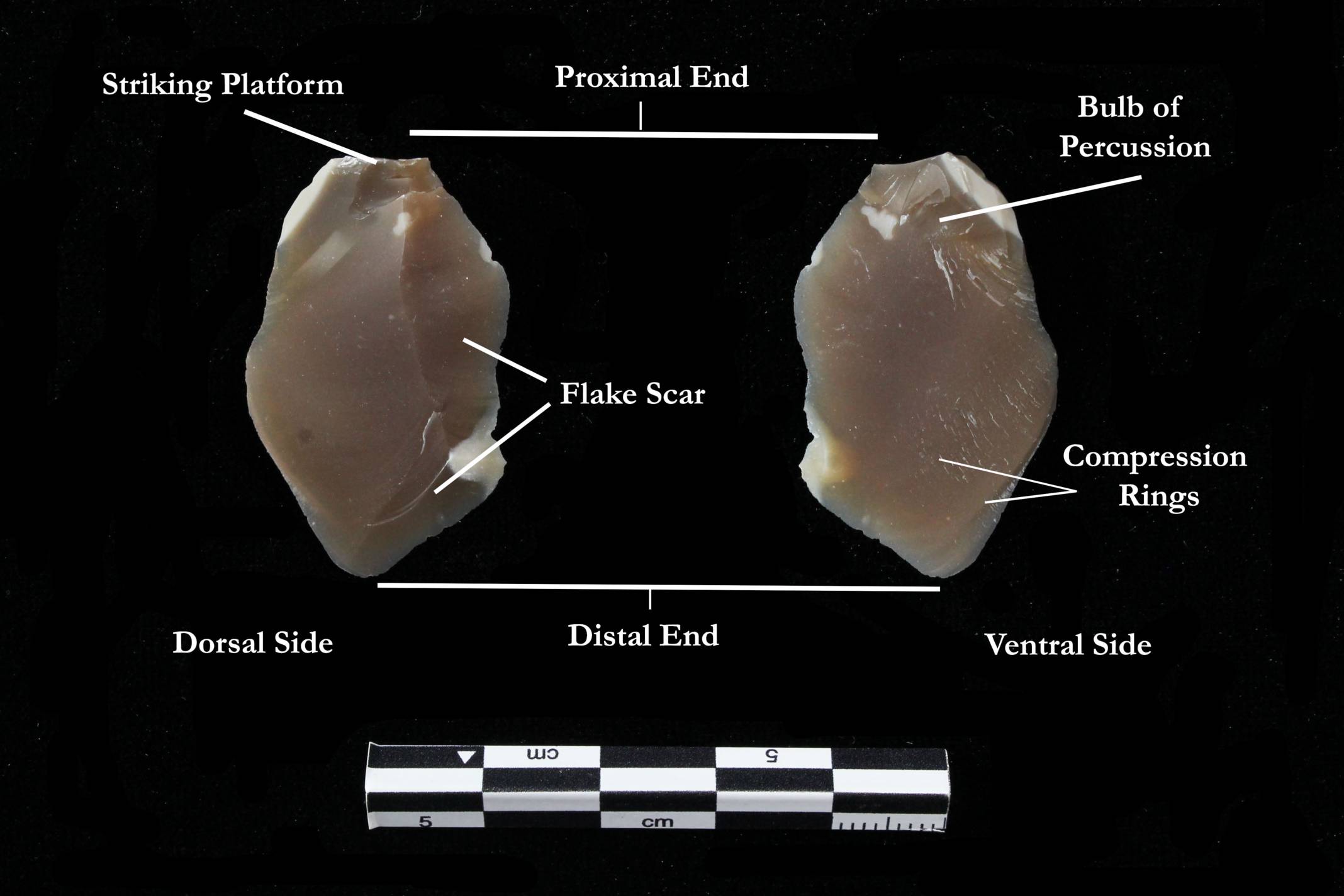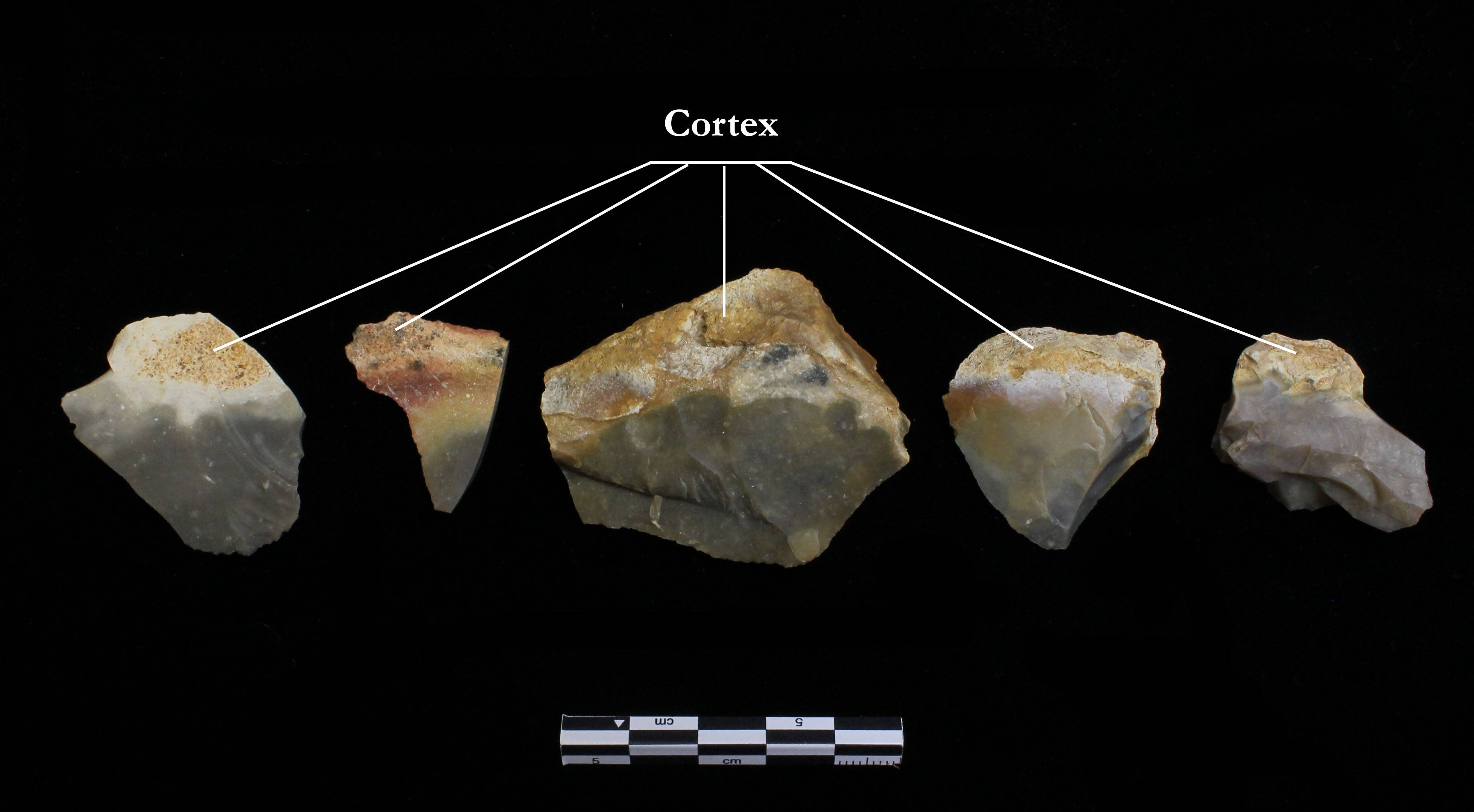Cores and Debitage
The process of manufacturing stone tools, also known as lithic reduction, is a sequential process that a stone tool goes through from the first flake struck off of a core to a finished tool, like a biface or projectile point. This process leaves behind a significant amount of flakes, or debitage. Debitage is the waste material from the production of stone tools. It is the detached and discarded debris produced from lithic reduction and includes the flakes and shatter material that have not been used as cores or tools. All flakes have specific properties that indicate they are the result of human modification, as oppose to stones that have not been culturally altered. Archaeologists collect and analyze debitage in order to glean important information about prehistoric stone tool making.
As a stone tool approaches completion, the debitage becomes smaller, and the amount of cortex on the debitage lessens. Therefore, a lithic analyst can study debitage from a particular site or context within a site and learn about which stages of reduction took place. A trend of smaller debitage with little or no cortex would indicate a later stage of core reduction, while a predominance of flakes with cortex would suggest that the whole cobbles were brought to the site to begin the earliest stages of tool manufacture.
A core is a piece of stone that shows at least three flake removals or attempted removals from one or more discernable platforms. Prehistoric toolmakers would strike cores with hammerstones, pieces of antler, or bone hammers to produce sharp flakes or blades , or a large enough piece that would eventually be worked into a biface or a projectile point. Cores were also sometimes modified to serve as a hand-ax, chopper or scraper. Cores that were made into tools are called core tools.
Our 2014 excavations at the Spring Lake Site yielded over 130,000 pieces of lithic debitage. Future analyses will include taking a closer look at the debitage from the established analytical units and sorting it into categories that will help us understand more about the lithic tool production and changes in lithic technology over time.
Twenty-seven cores were recovered as well. These will also undergo further analysis, but for now, check out the pictures below to see a few of the core types we found.


Cores from the Spring Lake Data Recovery
Click on the images below for more information about these artifacts.
